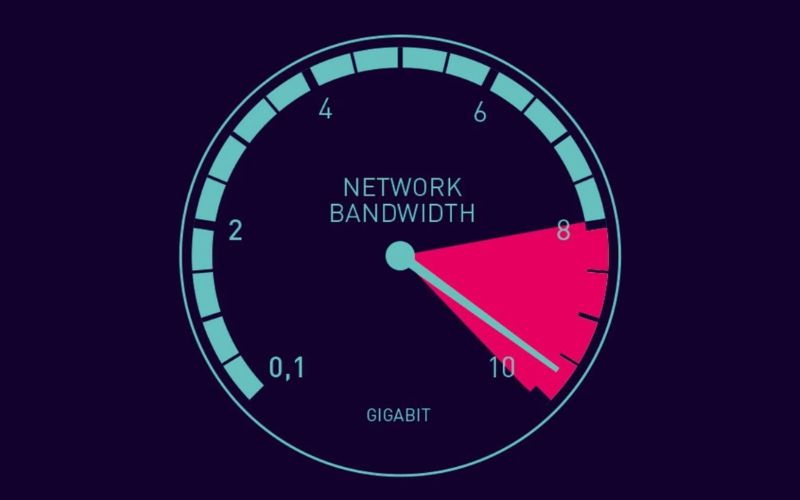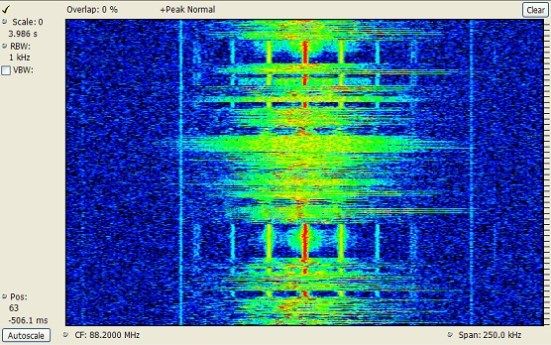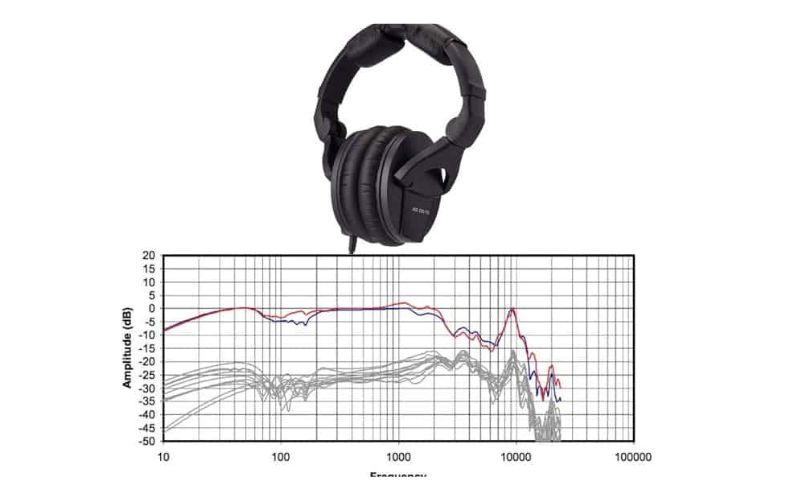Understanding the differences between bandwidth vs frequency is crucial in areas like internet technology, communication, and audio engineering. However, a common misunderstanding is mixing up the two concepts: frequency describes how often a signal cycles, impacting sound pitch or signal carriers, whereas bandwidth is about the range of frequencies a system can manage, reflecting its capacity. This confusion can lead to misapplications and inefficiencies in system design and usage. Recognizing and clarifying these distinctions is vital for enhancing system performance and ensuring technologies are utilized correctly.
What is Frequency?
Frequency is the number of waves or cycles that occur per unit of time. It’s like counting how often a repeating event (like a wave) happens in a given duration.
Measurements:
- The most common unit for measuring frequency is the hertz (Hz), named after the German physicist Heinrich Hertz. A single hertz is equivalent to one cycle second.
- For example, if a heart beats at a frequency of 120 times per minute (which is equivalent to 2 hertz), the period—the interval between beats—is half a second.
Example:
- Imagine you’re in a concert hall, surrounded by an electrifying performance by a violinist. The violin produces a beautiful musical note as the bow is drawn across the strings. That note is a sound wave—a vibration that repeats over time. The number of times vibration completes an entire cycle in secondhand determines the note’s frequency.
- For instance, if the violinist plays an A4 note (which corresponds to a frequency of approximately 440 hertz), the string vibrates 440 times every second. So, the captivating melody you hear results from those rapid oscillations

What is Bandwidth?
Bandwidth denotes the highest data transfer rate achievable over a specified pathway. It measures how much information can flow through a connection at a specific time. Think of it as the”capacity” of a communication channel or network.
Measurements:
- Bits per Second (bps): The basic unit of bandwidth. It represents the number of individual bits transmitted per Second.
- Kilobits per Second (Kbps): Equivalent to one thousand bits per Second.
- Megabits per Second (Mbps): Equal to one million bits per Second.
- Gigabits per Second (Gbps): Corresponds to one billion bits per Second.
Think of bandwidth like a pipe—the more comprehensive the pipe (higher bandwidth), the more data can flow through it simultaneously.
Example:
-
- You want to upload a 500 MB video file to a cloud storage service. You initiate the upload from your computer. Your home internet connection has a download speed of 100 Mbps and an upload speed of 20 Mbps. The cloud service uses your available upload bandwidth (20 Mbps) to transfer the file during the upload.
- The service sends chunks of the video file over the internet to the cloud server: 500 MB = 500 × 8 = 4000 megabits (Mb). Let’s calculate the time: Upload speed = 20 Mbps; Time = File size / Upload speed ⇒ Time = 4000 Mb / 20 Mbps = 200 seconds (or approximately 3 minutes and 20 seconds).
- Results: Your video file will take 3 minutes and 20 seconds due to your available upload bandwidth. The bandwidth and frequency relationship impacts this upload speed.

How do Bandwidth and Frequency relationship to data transmission
The concepts of frequency and bandwidth are fundamental in understanding data transmission in telecommunications and networking. Here’s how they relate to each other and to the overall process of transmitting data:
Frequency as a measure in data transmission
Frequency refers to the number of times a signal oscillates per second and is measured in Hertz (Hz). In data transmission, frequency is used to distinguish between different forms of data over the airwaves or through cables. For instance, different data types can be transmitted over different frequencies to avoid interference and optimize the use of the medium.
Bandwidth and data rate
In data transmission, bandwidth is the range of frequencies a transmission medium can carry from a lower to an upper bound, measured in Hertz (Hz). It directly affects the data rate and the amount of data transmitted per unit of time. The greater the bandwidth, the higher the potential data rate. This is partly explained by the Shannon-Hartley theorem, which states that the maximum data rate of a communication channel is proportional to its bandwidth and the logarithm of the signal-to-noise ratio (SNR). Again, the bandwidth and frequency relationship comes into play.
Frequencies within the Bandwidth range
The range of frequencies that comprise the bandwidth is critical because each frequency can carry part of the overall data. In modern communications, techniques such as Frequency Division Multiplexing (FDM) divide the available bandwidth into multiple independent channels, each using a different frequency. This allows various signals to be sent simultaneously over the same transmission medium, effectively increasing the medium’s capacity.
Higher frequencies and broader bandwidths are typically exploited in digital communications to achieve faster data transmission rates. For instance, in wireless communications, higher frequency bands like those used in 5G technologies provide greater bandwidth, allowing for faster internet speeds and more data transmission capacity than earlier generations like 3G or 4G.
The bandwidth and frequency relationship is crucial in implementing systems that demand higher, more reliable services.

Key differences between Frequency and bandwidth
| Bandwidth | Frequency | |
| Nature | Bandwidth is related to frequency but not identical to it. It refers to the range of frequencies present in a signal. | Frequency represents the number of complete cycles (oscillations) of a waveform occurring per Second |
| Bandwidth specifSeconde difference between the signal’s lowest and highest frequency components. | Frequency represents the number of complete cycles (oscillations) of a waveform occurring per Second | |
| Applications | – Data TSecondssion: Bandwidth defines the capacity of a communication channel to transmit data.
– Networking affects data transfer rates, internet speed, and network performance. A high-bandwidth connection allows faster downloads, streaming, and smoother video calls. |
– Communication: Frequency determines the pitch of sound waves (e.g., musical notes) and radio waves.
– Electronics: It is crucial in designing circuits, tuning instruments, and analyzing signals. |
In summary, while frequency focuses on the occurrence of cycles, bandwidth encompasses the entire range of frequencies and directly impacts data transmission capabilities. The bandwidth and frequency relationship is essential to understand.
The difference between Bandwidth and Frequency in applications
Explore the pivotal distinctions between bandwidth and frequency to unlock the full potential of your applications, from enhancing internet connectivity and communication to refining audio quality and communication systems.
Internet
Bandwidth:
- Higher bandwidth allows for quicker download speeds and efficient data transfer.
- It determines how much data can flow through the network within a given time.
- Download Speed: A more expansive bandwidth results in faster downloads.
- Latency: Bandwidth affects latency, which is the delay in data transmission. Lower latency means less waiting time for data to travel across the network.
- Streaming videos, online gaming, and large file downloads benefit from higher bandwidth.
- Businesses rely on sufficient bandwidth for efficient communication and data exchange.
Frequency:
Wi-Fi networks operate on two primary frequency bands: 2.4 GHz and 5 GHz. Each band has distinct characteristics that influence network performance.
- 2.4 GHz Band:
- Range: The lower frequencies in the 2.4 GHz band can penetrate solid objects more effectively, allowing signals to propagate throughout your home.
- Speed: However, the 2.4 GHz band offers slower speeds than 5 GHz.
- Interference: This band is more susceptible to interference from other devices (microwaves, cordless phones, etc.) within the identical frequency spectrum.
- 5 GHz Band:
- Range: The 5 GHz band has a shorter range but compensates with faster speeds.
- Speed: It provides significantly faster data transfer rates than the 2.4 GHz band.
- Interference: Due to its higher frequency, the 5 GHz band experiences reduced interference from other devices, making it ideal for densely populated areas with overlapping Wi-Fi networks
In summary:
- 2.4 GHz: Better range but slower speeds and more interference.
- 5 GHz: Faster speeds, reduced interference, but slightly shorter range
Communication
Bandwidth:
- Communication Bandwidth: In communication systems, bandwidth measures the system’s capacity for data transfer. For instance, a wider bandwidth allows faster data transmission. It’s essential for applications like streaming video, voice calls, and internet browsing.
- Digital Bandwidth: In digital systems, bandwidth influences the maximum rate at which data can be produced or processed. It impacts the overall system performance and efficiency.
Frequency:
- Radio: Different radio stations operate at distinct frequencies. Lower frequencies (longer wavelengths) are used for long-distance communication because they can travel unaffected over large distances. However, higher frequencies carry more energy and information but are inefficient for long-distance transmission.
- TV: Television broadcasts occur at specific frequencies (channels). Each channel corresponds to a particular frequency band. For example, VHF (Very High Frequency) and UHF (Ultra High Frequency) bands are commonly used for TV broadcasting.
In summary, bandwidth determines how quickly data can be transmitted, while frequency defines a signal’s oscillation rate. Both factors play crucial roles in designing efficient communication systems. The bandwidth and frequency relationship is a key consideration.

Sound system
Bandwidth:
- In audio production and transmission, a wide bandwidth is necessary for high-quality recordings to capture the full detail and nuance of the original sounds. This is especially important for high-definition audio formats, where preserving the fidelity of the recording is paramount.
- The bandwidth a speaker can handle effectively is also related to its power handling capacity, especially at low frequencies. Reproducing low-frequency sounds accurately without distortion requires speakers (especially subwoofers) that can handle high power levels over their operational bandwidth.
Frequency:
- A comprehensive frequency response, typically from 20 Hz to 20 kHz, is desirable for speakers and headphones because it covers the entire range of human hearing. However, the flatness of the frequency response within this range is also critical, as it affects how accurately the device reproduces each frequency, leading to a more natural and balanced sound.
- When selecting speakers, a more comprehensive frequency range suggests the speaker can deliver deep bass and crisp highs. However, the listening experience also depends on how evenly the speaker reproduces sounds across its entire frequency range.
- Headphones with a comprehensive frequency response can deliver low-end bass and high-end treble details. However, listeners’ subjective preferences for how these frequencies are balanced vary widely. Some may prefer a boosted bass response, while others prioritize a flat, neutral response for accurate sound reproduction.

In summary, distinguishing between bandwidth vs frequency is crucial for efficiently using and optimizing equipment and systems in technology and audio fields. Frequency measures the rate of signal oscillation, affecting sound pitch and signal transmission, while bandwidth indicates that the system transmits a range of frequencies. Misunderstanding these concepts can lead to suboptimal system performance. Therefore, a clear understanding of the differences between bandwidth vs frequency and the bandwidth and frequency relationship is essential for the effective design and operation of various technological applications, ensuring optimal functionality and efficiency. If you want to learn more about data or proxies, please visit the website Proxyrotating for more information!
>> See more:
Bandwidth and frequency relationship
Bandwidth definition in electronics
